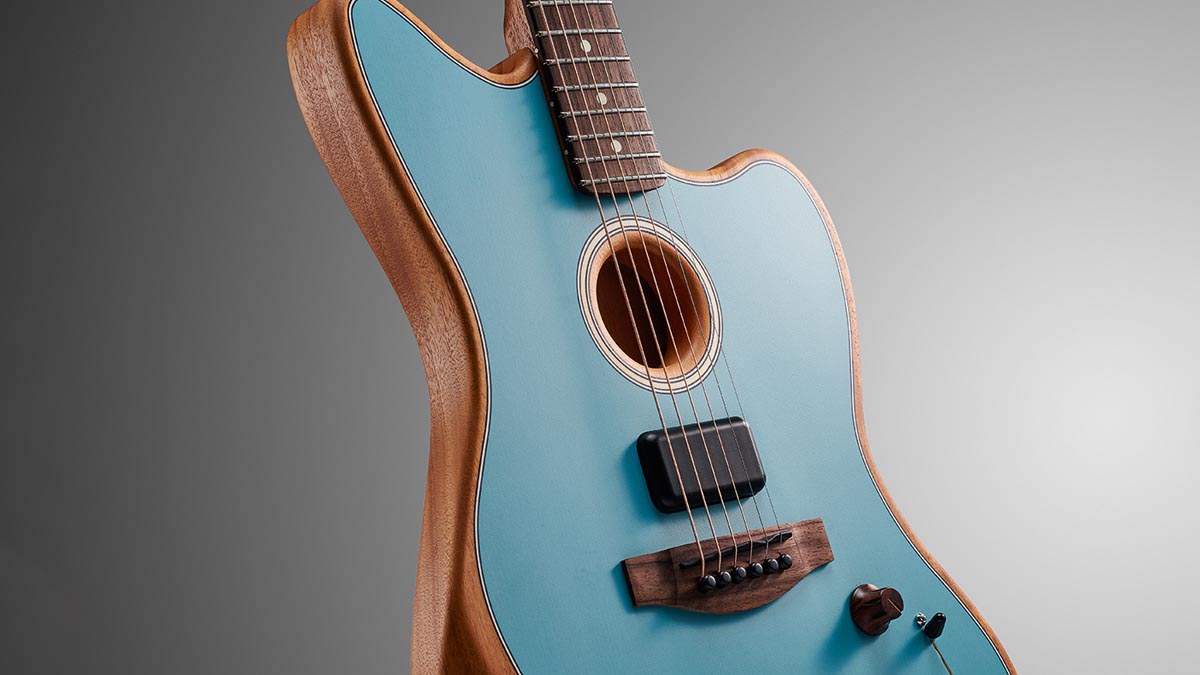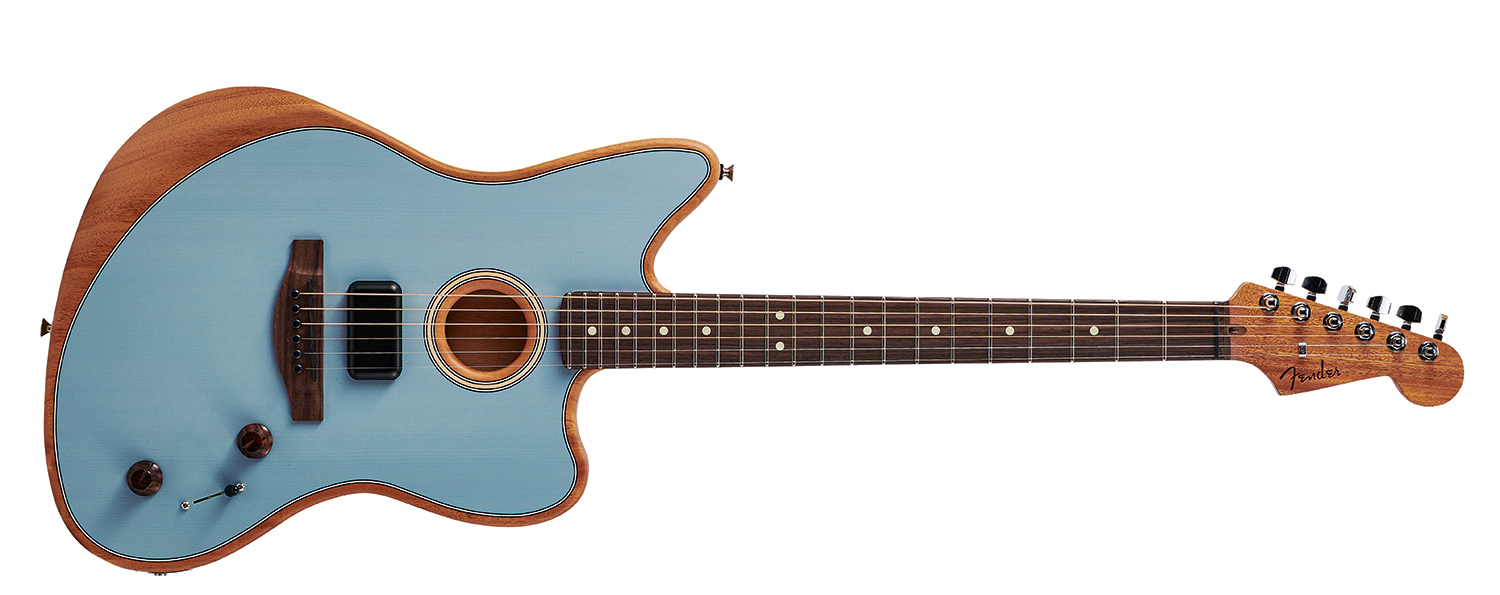
Four years into Fender’s Acoustasonic project, it still seems to be a misunderstood guitar series in some quarters. It’s not a best of both worlds acoustic/electric guitar – such a proposition would only disappoint.
Instead, we see it as an electro-acoustic guitar with enhanced flexibility and playability. The American Jazzmaster model was the most successful example of that to date – so how does its Mexican brethren fare?
There’s no body sensor pickup here like on the US model, bringing the pickup sources down from three to two: an under-saddle piezo and a noiseless magnetic. Here, the latter is a Shawbucker rather than the Tele’s single coil. There are four fewer ‘voices’ available via the blade selector as a result – instead, there are six here, grouped into pairs and selectable with the Blend knob.
An upgrade for some players will be the nine-volt battery power source instead of the non-removable rechargeable source of the US guitar. It’s much more practical for faster changes in a gig situation.
Though the Jazzmaster Acoustasonic is often hailed as the loudest model unplugged due to its larger body size, we didn’t find ours significantly so in direct comparison with a Player Tele model. Don’t expect it to rival even a parlor acoustic’s projection, but it’s great for unplugged practice: responsive while quiet enough not to get too many complaints from unappreciative family members.
The body and neck relationship specific to the Jazzmaster brings the upper frets further towards the player when sitting down, making it feel even more accessible in a way most acoustic guitars can’t be. And it really is a fantastic neck – once you tweak the action using the Micro-Tilt system. So it’s a great house guitar, albeit an expensive one. It’s in live use that the Acoustasonic begins to justify investment, but there are some caveats.

The switch between position one’s electric pickup and position three’s Fishman-designed acoustic imaging (a kind of IR of a mic’d acoustic mixed with the piezo signal) is the most usable here – well balanced and great for looping layers, or switching in for a lead line.
These acoustic voices are not the kind of warm, broad acoustic sound some “proper” systems offer on traditional flattops (and the US model’s body sensor helped with). They’re more a good mix between that and piezo, plus a little edge for holding ground in a band mix with some compression and reverb on hand.
We know because we took it to our covers band rehearsal, and found it worked well through a clean Fender Deluxe Reverb, in addition to a PA. But position two’s piezo clean and driven tones seem almost superfluous in comparison – the kind of standard electro-acoustic sound some players may be trying to get away from.
Specs
- PRICE: $1,199 / £1,029
- TYPE: Electro-acoustic
- BODY: Mahogany
- NECK: Mahogany, Modern Deep ‘C’
- SCALE LENGTH: 648mm
- NUT/WIDTH: Graph Tech Black Tusq/42.8mm
- FINGERBOARD: Rosewood, 12” radius
- FRETS: 22, Narrow Tall
- TUNERS: Fender Standard cast/sealed chrome tuners
- WEIGHT: 5.6lbs/2.54kg
- ELECTRICS: Fishman under-saddle transducer, Fender Acoustasonic Shawbucker, master volume, Blend knob, three-way Voice Selector lever switch. Single mono output. 9-volt battery power
- CONTACT: Fender







